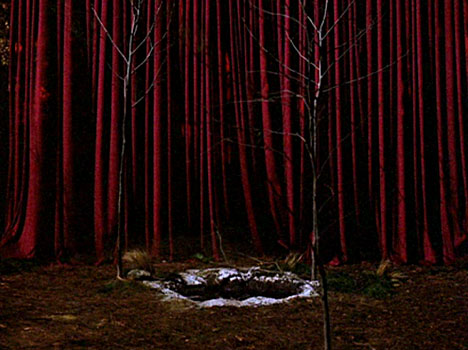Aug
4
2010
or Festivals from the Abyss

Herod, when he saw that he was deceived by the wise men, was exceedingly angry; and he sent forth and put to death all the male children who were in Bethlehem and in all its districts, from two years old and under, according to the time which he had determined from the wise men. Then was fulfilled what was spoken by Jeremiah the prophet, saying: “A voice was heard in Ramah, lamentation, weeping, and great mourning, Rachel weeping for her children, refusing to be comforted, because they are no more.” Matthew 2:16-18
Continuing from New Covenant Virility – 2
GLORIFICATION: (Tabernacles feast, marriage, children, rest)
Wow. This last bit really rubs in the kind of offspring (fruit) Israel gave God. It is the seventh stanza of this section, yet in itself it has seven stanzas. Each section submits itself to the common themes in Glorification, yet each section reiterates one step the sevenfold pattern. Tabernacles was the big feast, so in this final ascerbic prophecy, the prophet turns the annual Feasts into curses. [1] What sublime poetry is Isaiah.
Tabernacles is the Feasts of Booths. It is God’s people reaching maturity as a great tree and sheltering the nations. The cycle began with dry trees (eunuchs, etc.) being made fruitful. Here, God lays the ax to the root of the old tree.
Continue reading
1 comment | tags: Altar of the Abyss, Cyrus, Darius, Esther, Isaiah, Solomon, Tabernacles, Un-Passover | posted in Bible Matrix, Biblical Theology, The Restoration Era
Apr
10
2009
The Bible contains some patterns that are frequently repeated. Sometimes these are inverted or reversed to make a point.
An example would be the seven feasts listed in Leviticus 23 which provide a common literary structure. Revelation 1-11 follows this heptamerous pattern, with Jesus’ ascension in 4-5 as Firstfruits. Revelation 12-19 also follows this pattern, with the rise of the false prophet and harlot as an ironic counterfeit of Firstfruits.
In Revelation 16, in the second major cycle, the “Ascension” section concerns the fall of Babylon and its internal structure is upside down to make the point. Reaching the end of this second cycle, the “Atonement” section is even more tricksy. Because the seven feasts are chiastic (symmetrical) with Pentecost at the centre (actually the scorching fire of un-Pentecost), Passover (Red Sea) and Atonement (Jordan) correspond (feast 2 and feast 6). So even though the seven bowls deconstruct the Old Covenant feasts – running through their order backwards – the “un-Passover” of bowl 6 is actually the “Atonement” Joshua-conquest of the church, the new Israel. So this bowls section is a subtle see-saw, working from 7 down to 1 for the Old Covenant, and from 1 to 7 for the New. This becomes apparent at bowl 6, when, at Un-Passover, (the new church’s day of covering) old Israel is exposed, uncovered, before God.
Amazing.
Comments Off | tags: Atonement, Feasts, Leviticus, Passover, Revelation, Typology, Un-Passover | posted in Biblical Theology, The Last Days, Totus Christus


























